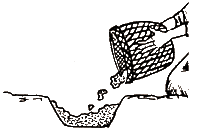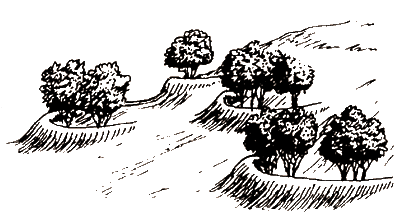Imagine vast areas of land with no trees and plants – just dust and cracked earth. When land which used to produce crops loses most of its fertility and becomes barren, the land becomes desert. For over 900 million people around the world this is a huge problem. It causes food and water shortages and forces people to leave their home areas.
People help to extend deserts by their actions – by cutting down or burning trees, by overgrazing with animals, by over-cultivating and not replacing plant nutrients and by using water incorrectly, through poor drainage, building up salt deposits which ruin the soil and kill most crops. There are many things that can be done to stop desert areas from spreading. These include farming along the contours – not up and down slopes; adding lots of organic materials such as crop wastes, manure and compost; planting trees and avoiding ploughing if possible.
Using strips of vetiver grass is another very effective way of protecting against erosion (see article on Reforestation and resources). Information from the Developing Countries Farm Radio Network 366 Adelaide Street, West Suite 706, Toronto, Ontario M5V 1R9, Canada. Fax: (416) 971 5299 E-mail: [email protected].
Planting in pits
In parts of West Africa, farmers make barren soil productive by planting their grain seeds in small pits. Dig a pit in the soil about 15–20cm deep and 25cm in diameter. Dig one of these pits every 80cm throughout the field. Put some manure, compost or crop wastes in each pit. When the rains come plant 4–6 seeds (sorghum, millet, maize etc) in each pit. You could also use the pits to plant tree seeds or seedlings. Termites will be attracted to the pits and help loosen the soil by digging tunnels. They also bring up nutrients from deeper in the soil where plant roots cannot reach.











